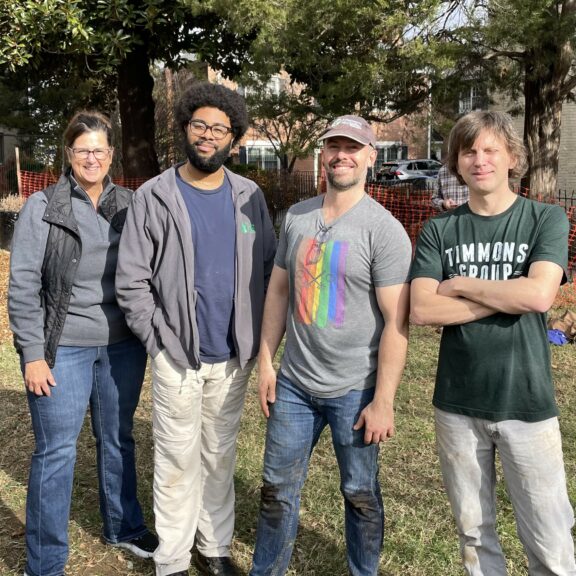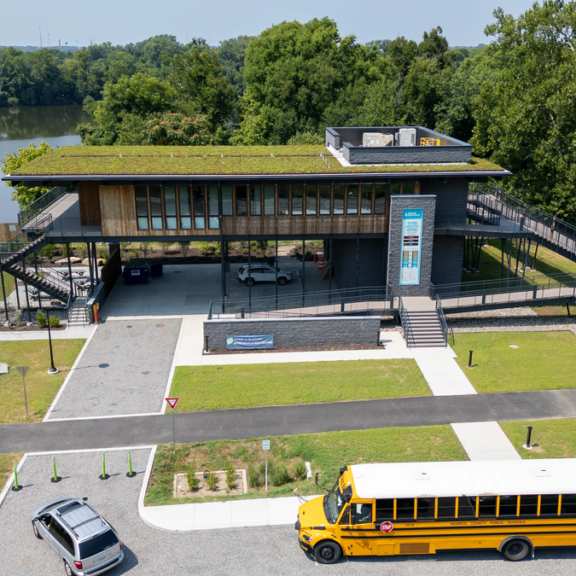“I’m sorry if that was information overload!” Jessica chuckled and said to me at the end of our conversation. “It’s easy to get carried away when I talk about it… I just love my job so much.”
When I sat down with Jessica Slagle from our Richmond stormwater group, I had no idea at the end of our 20-minute conversation I would know as much about stormwater as I do now. We talked about everything from municipal separate storm sewer systems (MS4s) to design methods her team uses to reduce suspended solids that enter the Chesapeake Bay.
While I became (at least for marketing purposes) a jack of all trades in stormwater lingo in those 20 minutes, one other thing became apparent during our conversation—Jessica is swiftly becoming a master of all things stormwater related here at Timmons Group.
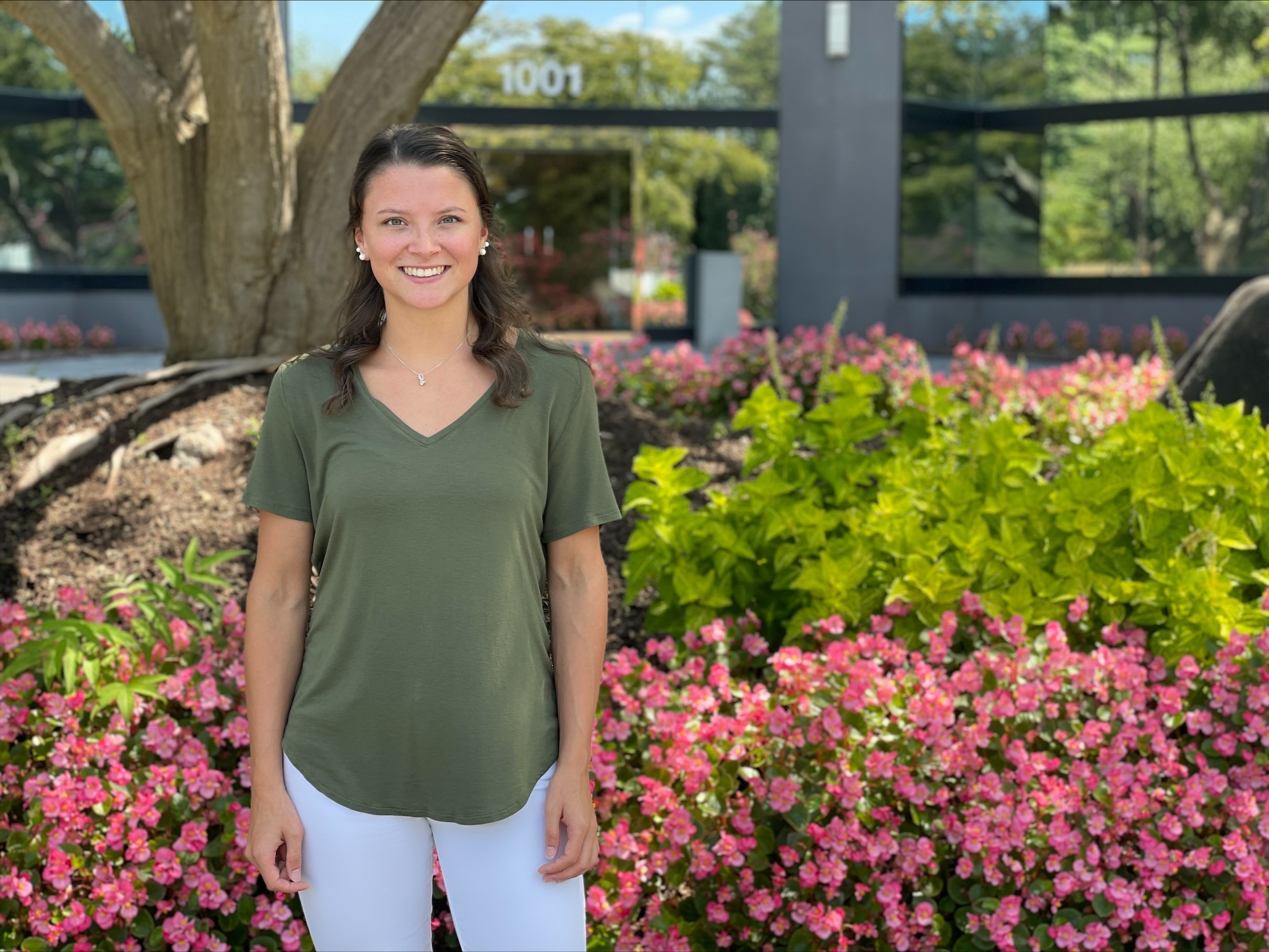
Jessica graduated from Virginia Tech in 2019 with a degree in biological systems engineering, a path she says she chose because it was a unique offering that integrated her two passions: biology and engineering. “I got into stormwater management with erosion and sediment control through the facilities department at Tech,” Jessica explained. During her final year in school, she joined facilities as an environmental technician, a working-student opportunity that she was introduced to by her program.
Of Jessica’s many duties in her position, she completed BMP (best management practices) and SWPPP (stormwater pollution prevention plans) inspections for new construction projects on campus. After graduation, she joined the team full time. It was shortly thereafter that she found Timmons Group while at a career fair. Jessica made the move from Blacksburg and is now a project engineer I in our Richmond office.
Jessica’s day-to-day involves working in programs like AutoCAD and ArcGIS with model extensions like HEC (hydrologic engineering center) RAS (river analysis system) or HMS (hydrologic modeling system) depending on project-based needs. Though working in these programs is a very traditional part of her career choice, the variety of projects she has had the opportunity to work on in her two years with the firm is a bit more unconventional.

“We have the opportunity to touch so many different types of projects,” Jessica said. “I wasn’t sure I’d have the chance in my career to touch dam safety or stream restoration, so it’s just a really neat experience to be involved in a multitude of jobs at the beginning of my career. Our project managers are great at helping us discover what we’re passionate about while learning about different kinds of stormwater engineering.”
Jessica admits that she didn’t know what exactly to expect when she joined the team because she wasn’t as familiar with stormwater work. But after getting her feet wet (pun intended) with flood plain analysis, drainage improvement, dam safety, and stream restoration, she quickly fell in love with stormwater engineering and the unique opportunities that come along with a career in the field.
Her favorite kinds of stormwater projects are for MS4 programs, a type of plan that holds municipalities and companies responsible for their impact on local ecosystems. Jessica’s municipal and university clients are expected to meet a credit requirement with their established annual MS4 plans. Some credits can be achieved by performing a SWPPP inspection, others by conducting a stream restoration—both of which Jessica is learning more about in her role at Timmons Group.
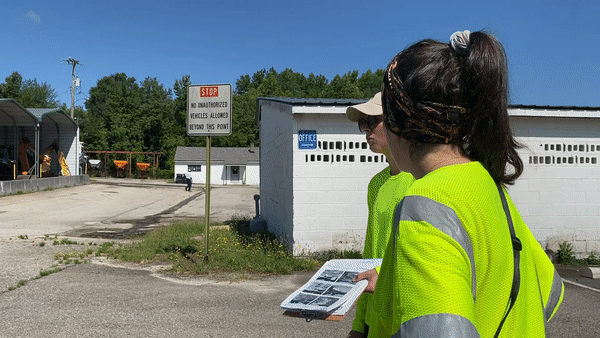
“In an MS4 system, the sewer and storm systems are totally separate,” Jessica explained. “Anything that goes into a storm inlet on the street also goes directly back into natural systems. And we don’t want pollutants going into the river or creek bed, so we conduct SWPPP inspections of municipalities, universities, large facilities, and industrial companies to ensure that they’re following DEQ regulations and protocol.”
These types of program inspections are conducted annually and are considered high priority. Jessica and her team also provide outreach education and visit sites for trash cleanup as part of their larger investment in long-term solution planning for municipalities. “Making sure that a locality’s maintenance staff understand why they can’t unload their equipment next to a creek bed because of runoff—that’s just one example of why our outreach is really important.”
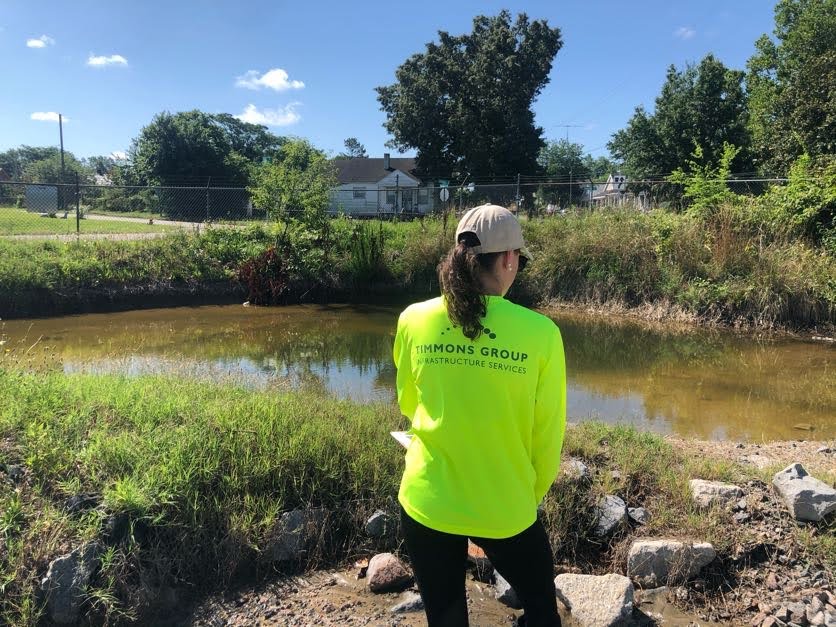
As part of her involvement in MS4 design, Jessica enjoys working in stream restoration. In their work at Timmons Group, the Richmond-based stormwater team is tasked with deciding if streams ought to be relocated for ecological or urban planning reasons, a significant part of many localities’ MS4 plans.
“Say, for instance, that a stream is blown out by a flood. A client might come to us to reevaluate how the stream could be better equipped to handle larger amounts of water in the future. From there, we’ll start with a hydrologic analysis to determine how much natural water is draining onto the site. We will calculate alignment (water flow direction combined with stream distance and scale) and sinuosity (the ratio of the stream length to the valley length).”
“Then, we enlist the help of our survey crews to get thalweg and topographic measurements and to determine if there are any utilities on the site, because you can’t design a stream over a sewer pipe. We can also call on our environmental teams to do feasibility studies and permitting. These projects really are all-hands-on-deck.”
Jessica and her team use a variety of methods like in-ground structures, live staking, moved earth, cobble, and vegetation to redesign streams with their longevity in mind. Some individuals on the team are tasked with inspecting the stream to ensure that the process is going well and that the on-site team is using the correct structures and tools.

“So, once we have a design for a new stream, crews will come in and move earth depending on where we are moving the stream to and from,” Jessica said. “Some of these streams are blown out with 20-foot-high banks. Sometimes we’ll design a creek so that extra water flows over the edges of the bank into the floodplain rather than carving back into the channel so those steep drop offs can be avoided in the future.”
Vegetation also plays a large role in erosion and sediment control for the newly designed stream, Jessica told me. “We have different kinds of planting and seeding plans depending on the kind of creek we’re working with.” Jessica and her team design their plans to incorporate a variety of ground cover, trees, and live staking—A method in which branches from water-loving native trees like dogwoods and willows are planted directly into a creek bank to grow.
“A reality of projects like these,” Jessica explained, “Is that sometimes we have to remove trees from a client’s property to do what’s best for the environment in the long run. But the great news is that even when we have to cut trees down, we will always replace them with many more healthy trees that can grow properly with the newly redeveloped stream.”
After some time of designing, construction, and planting, a beautiful new stream will emerge from the dedicated work of the crews involved in its production. The new stream may benefit a college campus, subdivision, or a committed natural reserve. Regardless of where they’re located and who of our human community they may be benefitting, these stream restoration projects all have one thing in common: They are making ecosystems more habitable for hydrophilic birds, insects, fish, and mammals.
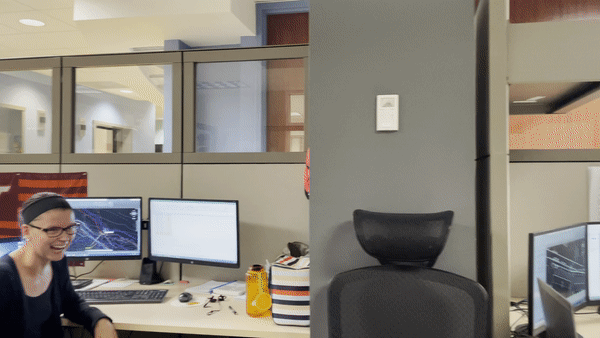
Passion comes with the job for Jessica as she’s not only invested in her career, but also the health of our surroundings. “We’re making long-term changes for the wellness of our environments,” she said. “I truly do believe in what we’re doing here at Timmons Group, and throughout biosystems engineering… That we’re making the earth a better place to live.”
Because she’s so passionate about the earth, you can imagine that Jessica also enjoys being outdoors from time to time. And it’s not just the design aspect of stormwater engineering that resonates with Jessica—she considers any job a ‘win’ when she can step outside of the office to spend time outdoors with great company. “I love my coworkers!” Jessica said excitedly. “We have so much fun both in the office and on-site at inspections.”
When I asked Jessica what has made her time at Timmons Group so unique and enjoyable, she said, “There is so much opportunity for growth and success. From training to our review system, I feel like every aspect of our company culture is keeping me on my toes and helping me learn and develop professionally.”
Are you interested in joining Jessica in her stormwater work? Check out our open positions at www.timmons.com/careers.

